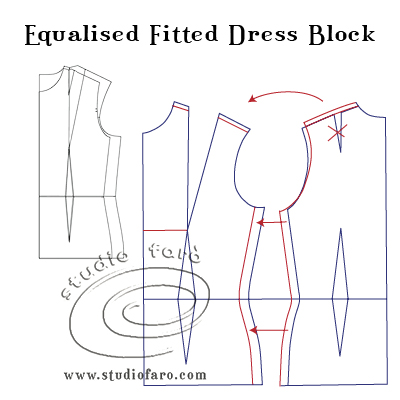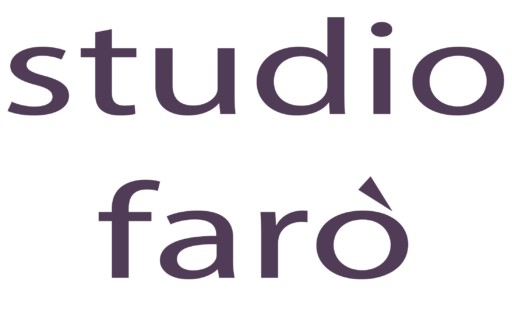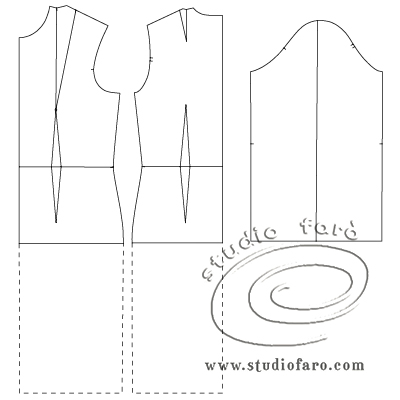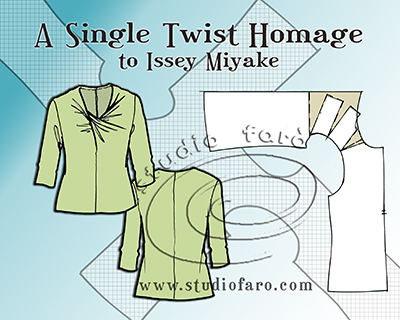22 Feb How to Equalise your Fitted Dress Block
Posted at 13:14h
in Fitted Dress Block, Fitting Patterns, Garment Blocks, Pattern Making Instructions
0 Comments
My women's fitted block is a tailored, rather formal fit with the side seam sitting towards the back of the body. The front block is 4cm wider then the back block. This is a more tailored fitting and entirely appropriate for many garment types. It's especially fabulous when used to make a a corset block or tailored jacket block. The PDF download from the website is the original block and ideal for your toile fittings before cutting any dress patterns. However many designs will work better if you equalise your dress block, in particular drape dress designs.











